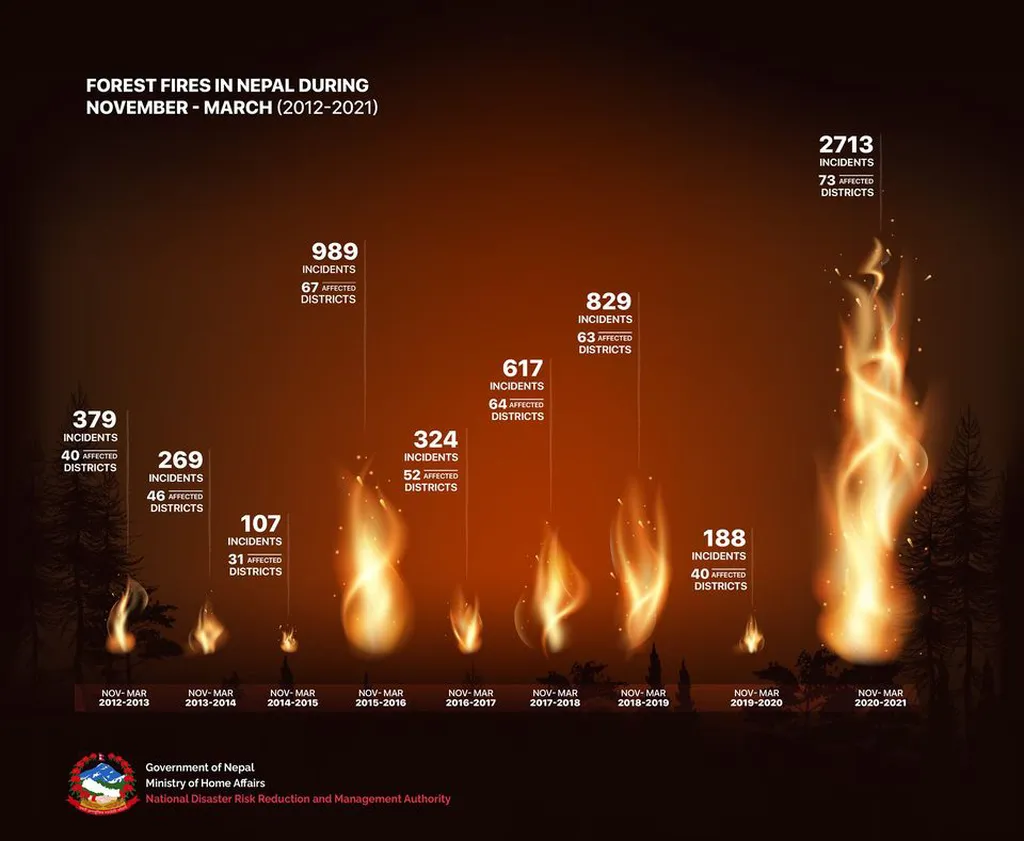In the heart of the Himalayas, a silent crisis is unfolding. Forest fires, often overshadowed by global headlines, are reshaping Nepal’s landscapes and economies. A recent study, led by Khagendra Prasad Joshi from the Central Department of Hydrology and Meteorology at Tribhuvan University and Clemson University, sheds light on the complex dynamics of these fires and their implications for the energy sector.
Nepal’s diverse ecosystems, from the tropical Terai to the alpine High Mountains, each tell a unique story of fire. “We found that fire incidents and burned areas have increased significantly in the Chure and Middle Mountains over the past two decades,” Joshi explains. This trend is not just an ecological concern but also a commercial one. Forests are a vital resource for Nepal’s energy sector, providing timber, fuelwood, and biomass for power generation. Fires disrupt these resources, leading to economic losses and energy shortages.
The study, published in the journal ‘Trees, Forests and People’ (translated as ‘Trees, Forests and Humans’), reveals that broad-leaf deciduous forests in lower regions and needle-leaf forests in higher regions are the most significant contributors to fire incidents. However, the drivers of these fires vary across regions. While topographical factors like slope and aspect play a major role in most regions, they have minimal influence in the Chure. In the High Mountains, anthropogenic factors such as proximity to roads and agricultural land cover are strongly negatively correlated with burned area.
Climate also plays a crucial role. Pre-monsoon precipitation consistently shows a significant negative relationship with fire occurrence across all regions, while pre-monsoon temperature has no discernible impact. This finding could help energy companies anticipate fire risks and plan accordingly.
The study also highlights the importance of community involvement in fire management. Survey responses show strong support for awareness programs and training, and a belief in the importance of local institutions in fire management. However, labor-intensive fire prevention practices are less preferred, suggesting a need for more efficient and effective strategies.
As Nepal’s energy sector continues to grow, understanding and managing forest fires will be crucial. Joshi’s research offers valuable insights into Nepal’s fire regimes and supports evidence-based forest fire management strategies. It also underscores the need for a multi-stakeholder approach that involves local communities, policymakers, and energy companies.
In the words of Joshi, “To mitigate future fire risks, we recommend strengthening community involvement, expanding fire management training, and increasing economic incentives linked to forest resources.” By doing so, Nepal can protect its forests, secure its energy resources, and build a more sustainable future.

